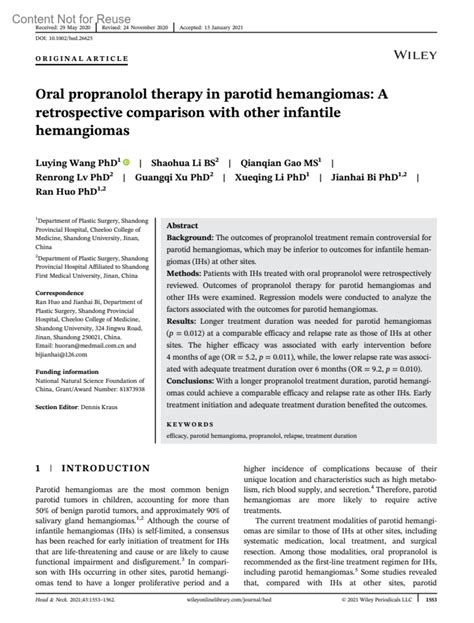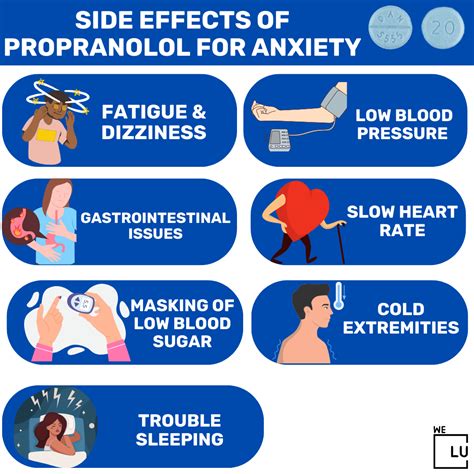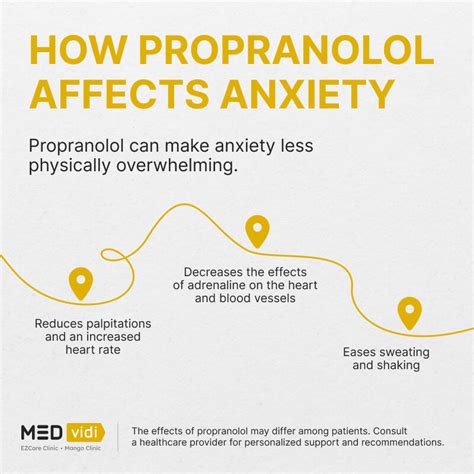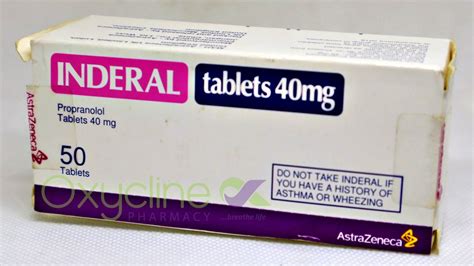Intro
Propranolol is a medication that has been widely used for decades to treat a variety of health conditions, including high blood pressure, angina, and certain heart-related issues. The importance of understanding how propranolol works cannot be overstated, as it is a crucial aspect of managing these conditions effectively. By grasping the mechanisms behind propranolol's effects, individuals can better appreciate the role this medication plays in maintaining their health and well-being. Moreover, with the increasing prevalence of cardiovascular diseases, the significance of propranolol and its working mechanisms is more relevant than ever. As we delve into the details of how propranolol works, it becomes clear that this medication is not just a treatment option but a vital component in the management of various health conditions.
The fascination with propranolol stems from its unique ability to interact with the body's physiological processes, particularly the cardiovascular system. By influencing heart rate, blood pressure, and cardiac output, propranolol demonstrates its versatility as a therapeutic agent. This medication's impact on the body is multifaceted, affecting not only the heart but also the blood vessels and the nervous system. As a result, understanding the intricacies of propranolol's action is essential for healthcare professionals and patients alike. The more we comprehend the workings of propranolol, the better equipped we are to harness its therapeutic potential and improve patient outcomes.
Propranolol's role in modern medicine is a testament to the advancements in pharmaceutical research and development. With its discovery and subsequent introduction into clinical practice, propranolol has revolutionized the treatment of various cardiovascular conditions. Today, it remains a cornerstone in the management of high blood pressure, angina, and certain arrhythmias, among other conditions. The enduring relevance of propranolol is a reflection of its efficacy and safety profile, which have been extensively studied and documented over the years. As our understanding of propranolol's mechanisms of action continues to evolve, so too does its potential applications in clinical practice.
Introduction to Propranolol

Propranolol belongs to a class of medications known as beta-blockers. Beta-blockers work by blocking the effects of the hormone epinephrine, also known as adrenaline, and by slowing the heart rate and reducing its workload. This action helps to lower blood pressure and increase oxygen supply to the heart. Propranolol is a non-selective beta-blocker, meaning it blocks both beta-1 and beta-2 adrenergic receptors. Beta-1 receptors are primarily found in the heart, while beta-2 receptors are found in the lungs, blood vessels, and other smooth muscles. By blocking these receptors, propranolol reduces the heart rate, contractility, and cardiac output, thereby decreasing the oxygen demand of the heart.
Pharmacokinetics of Propranolol
Propranolol is well absorbed from the gastrointestinal tract, with a bioavailability of approximately 25% due to extensive first-pass metabolism. It is highly lipophilic, which allows it to cross the blood-brain barrier and exert effects on the central nervous system. Propranolol is metabolized by the liver, primarily through the cytochrome P450 system, and its metabolites are excreted in the urine. The half-life of propranolol is around 3-6 hours, but this can vary depending on factors such as age, liver function, and renal function.Therapeutic Uses of Propranolol

Propranolol is indicated for the treatment of various conditions, including:
- Hypertension: Propranolol is used to lower blood pressure in patients with hypertension.
- Angina pectoris: Propranolol helps to reduce the frequency and severity of angina attacks by decreasing the heart's oxygen demand.
- Arrhythmias: Propranolol is used to control certain types of arrhythmias, such as supraventricular tachycardia and ventricular tachycardia.
- Migraine prophylaxis: Propranolol is used to prevent migraine headaches.
- Essential tremor: Propranolol is used to treat essential tremor, a condition characterized by involuntary shaking of the hands or other parts of the body.
Benefits of Propranolol
The benefits of propranolol are numerous and well-documented. Some of the key advantages of using propranolol include: * Reduced blood pressure: Propranolol helps to lower blood pressure, which can reduce the risk of heart disease, stroke, and kidney disease. * Improved angina symptoms: Propranolol can reduce the frequency and severity of angina attacks, improving quality of life for patients with angina. * Effective arrhythmia control: Propranolol is effective in controlling certain types of arrhythmias, reducing the risk of complications such as stroke and heart failure. * Migraine prevention: Propranolol can help to prevent migraine headaches, reducing the frequency and severity of attacks.Side Effects of Propranolol

Like all medications, propranolol can cause side effects. Some common side effects of propranolol include:
- Dizziness and lightheadedness
- Fatigue and weakness
- Shortness of breath
- Bradycardia (slow heart rate)
- Hypotension (low blood pressure)
- Cold hands and feet
- Nausea and vomiting
- Diarrhea
- Constipation
Contraindications and Precautions
Propranolol is contraindicated in certain patients, including those with: * Bronchial asthma or chronic obstructive pulmonary disease (COPD) * Sinus bradycardia or heart block * Cardiogenic shock * Severe peripheral arterial disease * Untreated pheochromocytoma * Pregnancy and breastfeeding (propranolol can pass into breast milk and may harm the baby)Dosage and Administration of Propranolol

The dosage and administration of propranolol vary depending on the indication and patient factors. Typical dosages of propranolol include:
- Hypertension: 40-80 mg twice daily
- Angina: 80-160 mg twice daily
- Arrhythmias: 10-30 mg three to four times daily
- Migraine prophylaxis: 80-160 mg daily
- Essential tremor: 40-80 mg twice daily
Interactions with Other Medications
Propranolol can interact with other medications, including: * Calcium channel blockers: increased risk of hypotension and bradycardia * Beta-agonists: decreased efficacy of propranolol * Clonidine: increased risk of hypotension and bradycardia * Digoxin: increased risk of digitalis toxicity * Warfarin: increased risk of bleedingConclusion and Future Directions

In conclusion, propranolol is a versatile medication with a wide range of therapeutic applications. Its unique mechanism of action, which involves blocking beta-1 and beta-2 adrenergic receptors, makes it an effective treatment option for various cardiovascular conditions. As our understanding of propranolol's pharmacokinetics, therapeutic uses, and side effects continues to evolve, so too does its potential in clinical practice. Future research directions may include exploring new indications for propranolol, such as its use in the treatment of anxiety disorders and post-traumatic stress disorder (PTSD).
What is propranolol used for?
+Propranolol is used to treat various conditions, including hypertension, angina, arrhythmias, migraine prophylaxis, and essential tremor.
How does propranolol work?
+Propranolol works by blocking the effects of the hormone epinephrine, slowing the heart rate, and reducing the heart's workload.
What are the common side effects of propranolol?
+Common side effects of propranolol include dizziness, fatigue, shortness of breath, bradycardia, hypotension, cold hands and feet, nausea, and diarrhea.
We invite readers to share their thoughts and experiences with propranolol in the comments section below. If you have any questions or concerns about propranolol or its uses, please do not hesitate to ask. Additionally, if you found this article informative and helpful, please consider sharing it with others who may benefit from this information.
